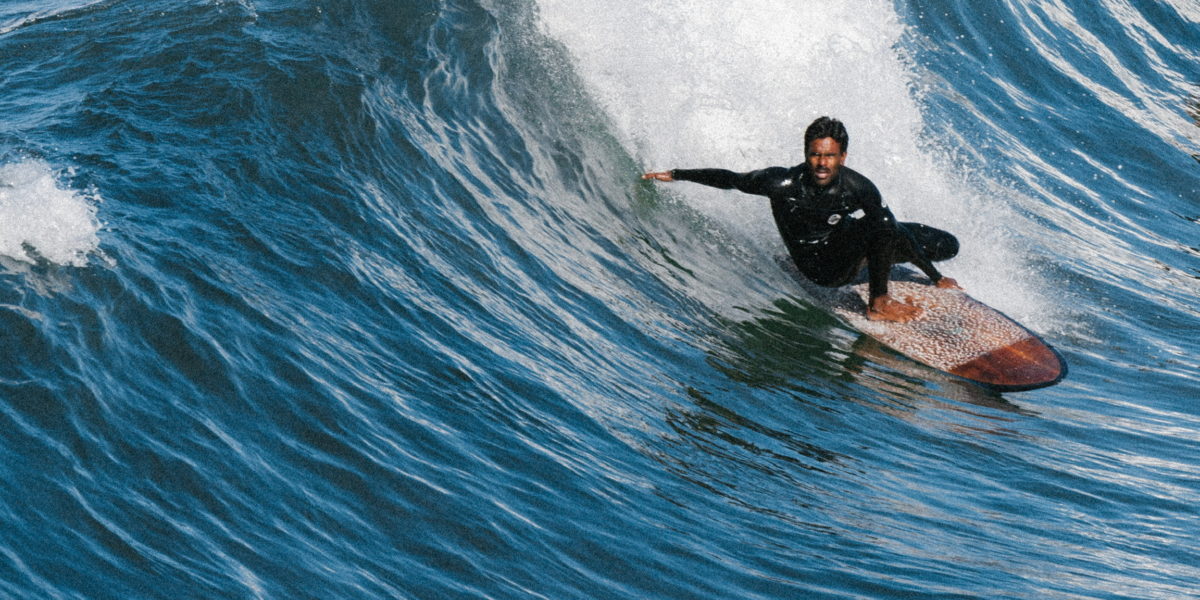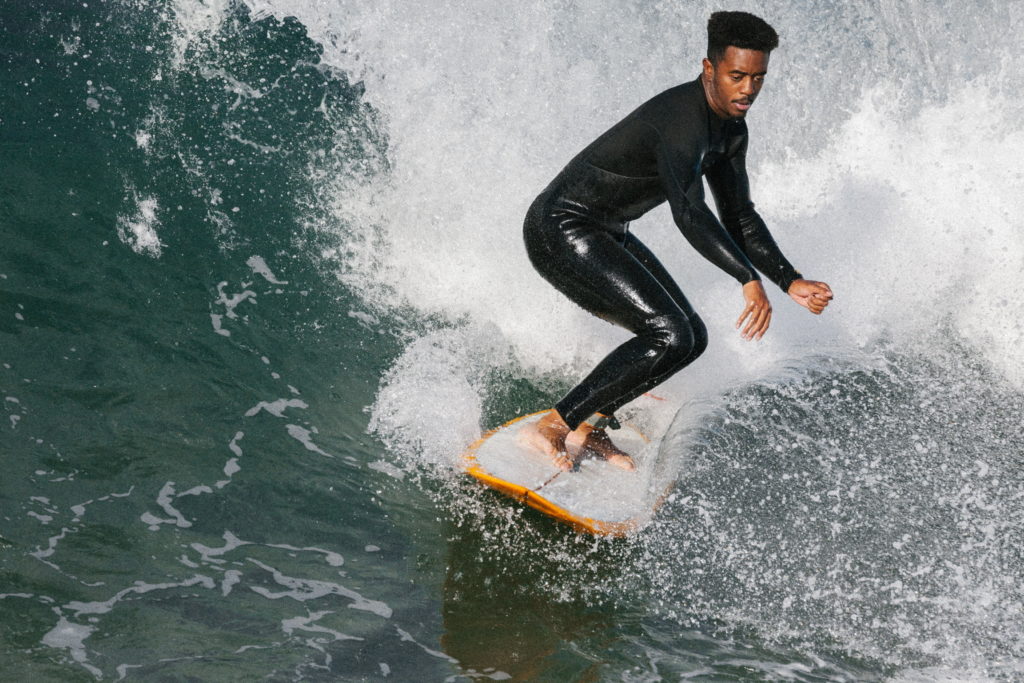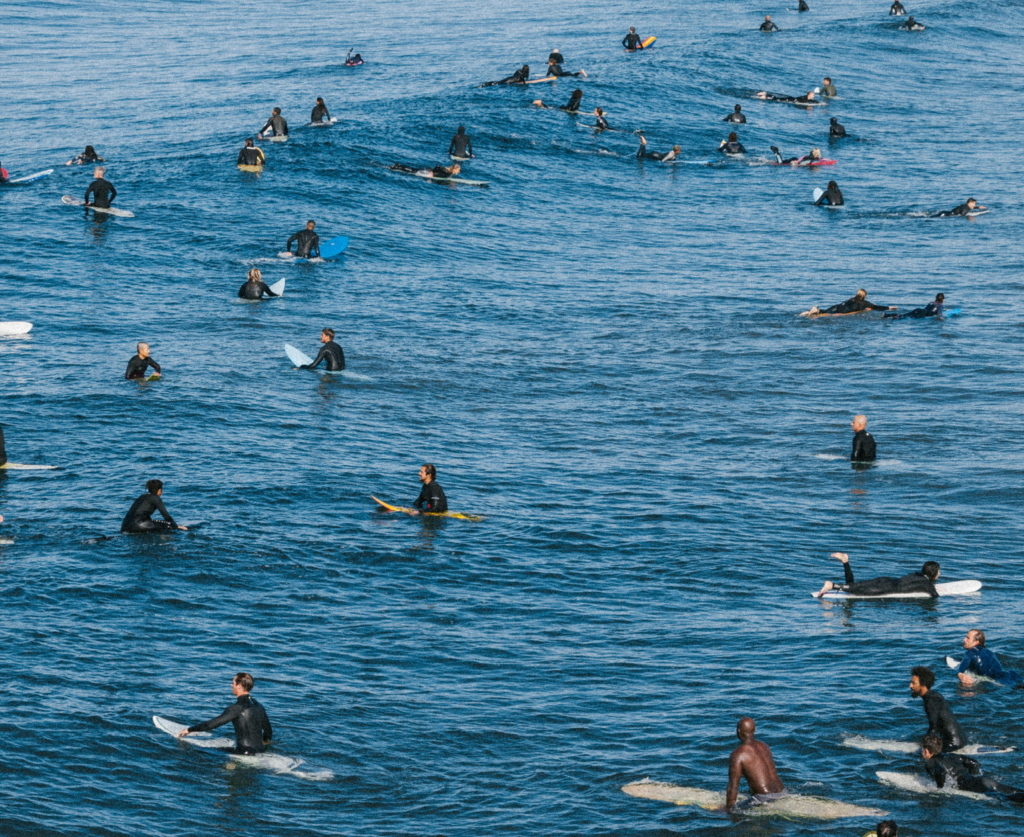
How the Black Sand Surf Collective Turned an Act of Racial Hate Into a Peaceful Gathering in the Water
The ocean was made for everybody, Black Sand Collective and other like-minded organizations are here to make sure it stays that way.

Anthony Tran
Many people have found solace and new hobbies in the ocean through the last year of the global pandemic. Since August of 2020, I’ve followed along through social media as my friend Justin “Brick” Howze packed his surfboard into his car before the sun came up and headed to the beach to practice riding the waves. Before the year ended, he took a trip to Hawaii with some friends where he came to start the Black Sand Surf Collective. Black Sand is described by Brick as an “honest response to what it felt like to be black in the ocean, it felt like an anomaly that we were there. We felt like we had to call what we were doing something because it felt like something. We wanted to set the tone and bring other people in, we went out with good vibes and intentions and doing it for ourselves, and through that, we wanted to inspire other people”.
Last year, we talked with Rhonda Harper of Black Girls Surf who told us about coming to California from Hawaii to surf in 1987 and having “Go home n—” sprawled across her window in wax. From 1987 to 2021, the surf community has made waves and changes to become more inclusive to people of color through community-based organizations like Black Sand and Black Girls Surf. While changes however small are important, the work that needs to be done to make sure the future of surfing is racially inclusive is nowhere near done.

Anthony Tran
On President’s Day (February 15th) while surfing at Manhattan Beach, Brick was verbally and physically harassed by a fellow surfer. He recalls the incident for us, “There was a kid I see every day while surfing who we had a common traffic jam with, and an older man came out of nowhere and told us to get out of here. He called us names, I told him we should paddle in and talk about it when he started throwing around racial slurs. He splashed water in my face for a minute straight while repeating the n-word, and he kept swimming closer to me. I was just looking him in his eyes, not doing anything, this was an opportunity to lead with love and respond with peace because he was hurting inside. Everyone could hear what he was saying from the water, we were close to the pier so there was a photo of the incident and the man splashing me that clearly showed me being verbally abused. It was a reality check for so many people that this is the toxic stuff living under the surface of surfing culture.”
That same week, Brick and his fellow Black Sand Collective members organized a Peace Paddle at Manhattan Beach after news had spread of the racist incident. The turnout for the Peace Paddle was bigger than he could’ve imagined. “We are just documenting the experience of us trying to surf in a place where there aren’t any POC. Manhattan Beach has less than 1% black people, and we all deserve a space in the ocean, the ocean is for everyone to share. That’s why we put together the Peace Paddle, it had such a beautiful turnout, groups like Color the Water, Textured Waves, 1Plant1people, people who give access and resources to the community for free. The visibility of our story calls for peace and that’s what we showed on Sunday.” Brick tells us of the gathering.
Being Black in spaces that are not welcoming or created for people of color to succeed, dismantling that hate, and creating access for other people of color to organize and engage in new skills is just one way that places lacking equality will become inclusive of all people regardless of race, gender, ethnicity, or size.

Anthony Tran
The Black Sand Peace Paddle will become a recurring event to spread awareness and positivity around being Black in the water. “There was so much peace and love at that paddle. “Localism” and “locals only” are terms that are really just saying no black people or people that don’t live here. We proved it’s sharable, there are over 150 people in the water getting on party waves, as opposed to people fighting over what wave is who’s. We will continue to document the journey, continue to tell our stories, and that will make history. The peace paddle itself is going to work and run with the intention of giving back.” Brick tells us.
Surfing, the ocean, and watersports often lack the presence of people of color. This isn’t due to lack of interest, but instead lack of access. Geographically, Black communities are not near public beaches, and the communities that do have access to beaches ensure access remains exclusive by not having public transit lines that take you to desirable beach locations. Organizations like Surf Bus Foundation pick up inner-city kids and take them to the beach while providing lessons and boards. Color the Water is another group that gives children of color boards and wetsuits. Brick tells us “For me, Black Sand should be the voice of underrepresented people and give back selflessly to those same people. We have a lot of catching up to do in this sport in general. We’re going to have fun, we’re going to heal, and we’re going to change the way that it looks.”
Situations involving acts of racial injustice against people of color in the United States is a longstanding fight, as protests continue across the U.S. against police brutality, racial inclusivity in politics, and much more, using our voices, platforms, and resources to raise awareness is the key to creating lasting change. Follow Black Sand on Instagram here to stay up to date about when the next Peace Paddle will be and how you can get involved.
